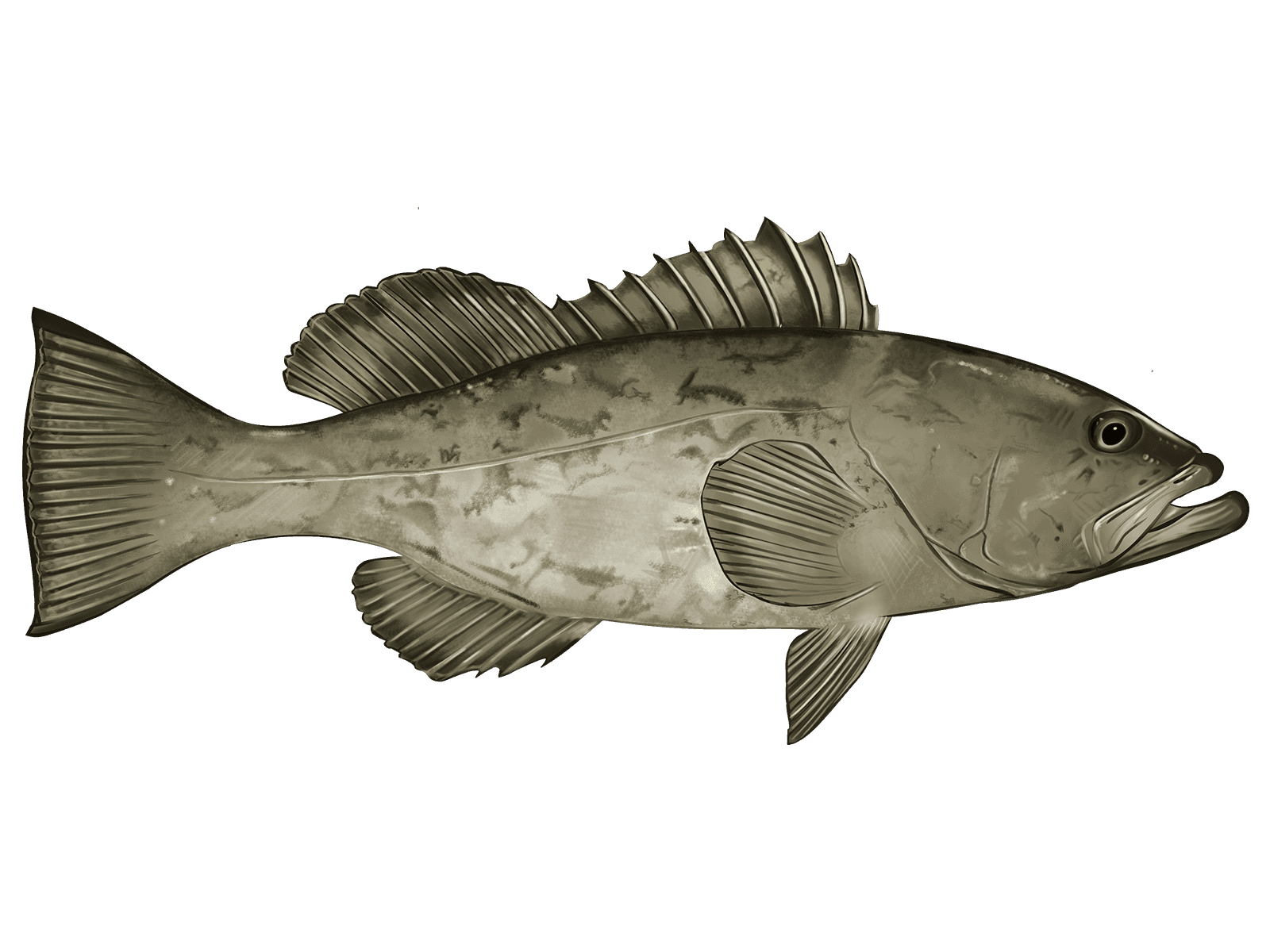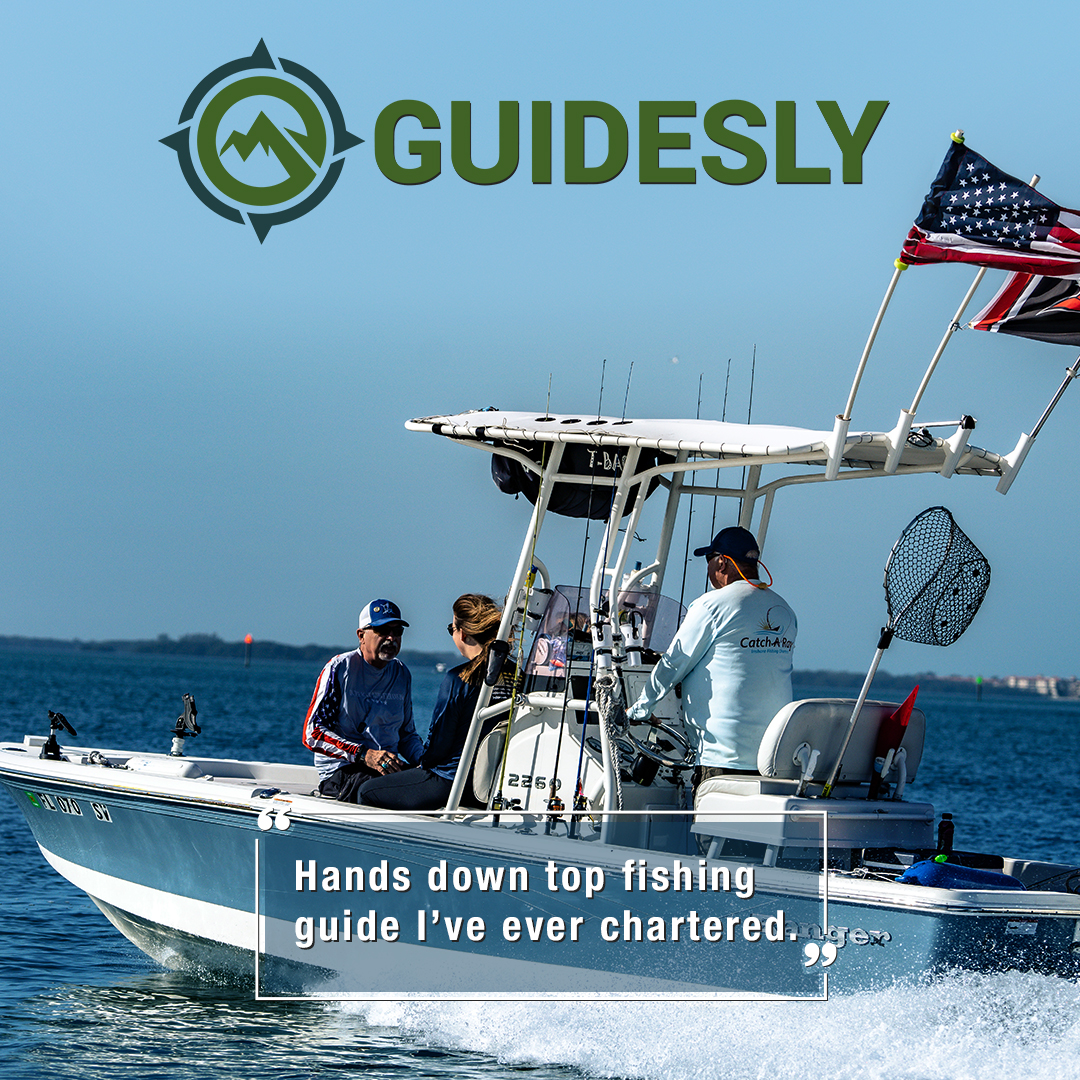Gag Grouper

Species Details
Mycteroperca Microlepis
Serranidae
Perciformes
Onshore, Nearshore, Offshore, Reef
10 - 50 lbs.
24" - 57"
Gag Grouper (Mycteroperca Microlepis) Fish Description
The Gag Grouper appears to be one of the less aesthetically appealing fish among the Groupers. Some even describe the Gag Grouper as “drab” in appearance. Its fins are mostly composed are rays and have a laterally-compressed oblong body. However, it does have a similarity to the Black Grouper: it’s the box-shaped black spots on the back. Their dorsal fins have 11 spines mixed with 16-18 rays while their anal fins have 3 spins with a mix of 10-12 rays.
Female Gag Groupers are normally pale or medium grey in color. Their bodies have a more marbled appearance due to the wavy patterns covering their bodies. But the best way to tell a female and a male apart is through the dorsal fin. Unlike female Gag Groupers, a male Gag Grouper’s dorsal fin is reticulated. Color-wise however, they are also darker than female Gag Groupers. Their bellies and breast are usually dark gray, almost black.
Gag Grouper Diet and Size
Depending on their size, a Gag Grouper’s diet changes. Though, Gag Groupers are seen to prefer a variety of crustaceans such as crab and shrimp. They do like some fish and sometimes, an occasional squid.
An average Gag Grouper is 20 inches (50 cm) long. However, some have reported seeing a Gag Grouper reach 145 cm (57 inches) in length and weigh 36.5 kg (80 lbs).
Interesting Facts about the Gag Grouper
- Gag Groupers, when they mature, change sex from female to male.
- When they’re young, all Gag Groupers start out as females.
- However, Gag Groupers are more commonly female.
- Gag Groupers grow slowly. It usually takes them5-6 years to sexually mature.
- Juvenile Gag Groupers have a different habitat preference to adult Gag Groupers.
- Its scientific name microlepis means small scales in Latin.
- Gag Groupers can live up to 30 years.
- Red Tide can heavily affect Gag Grouper populations.
Gag Grouper – Fishing Techniques: How to Fish for a Gag Grouper
The first thing to look for is a place that can serve as shelter. Gag Groupers like hiding so, they would make use of any structure that can serve as shelter. Young Gag Groupers prefer staying inshore and in shoals until they mature. Older Gag Groupers loiter around offshore reefs and shipwrecks. Usually, when fishing for Gag Groupers, they are usually accompanied by Kingfish and Spanish Mackerel. At times, they’re also accompanied by Blacktip and Spinner Sharks. They’re found chasing herrings that swarm near the beach.
Others advise looking for stone crab traps. Since Gag Groupers love crab, they’ll most likely go to a place where crabs hide.
When it comes to bait choice, Gag Groupers love live bait. They prefer mullet and pinfish. However, some anglers have reported having success with also cut bait like octopus, squid, and crabs. Other options include using Pilchards, Cigar Minnows, and Grunts.
For your equipment, it depends on where you are. In Florida, you’re required to use a circle hook when going bottom fishing. But some say that the standard equipment will do. Standard rod with a 40-pound line works but people have done well even with a 20-30 one. Make sure that your bait is hooked on well but with the barb still sticking out.
When going for the Gag Grouper, be prepared to wrestle with it. Once they snag your bait, they’ll want nothing but to drag their food back to the depths where they came from. They’ll try to run against the rocks to make sure they don’t get fished out. To avoid that, make sure the reel’s locked and don’t let it freewheel otherwise it’ll give them a chance to dive into a hole. To make it easier, some people advise keeping your rod low so it’s easier to just yank them out of the water.
Gag Grouper Habitat and Distribution
Gag Groupers like staying in coastal waters with a lot of rocky structures. Some of their preferred rocky structures include rocky bottoms and reefs. They also like loitering near drop-off walls in the deep waters. But the younger Gag Groupers like staying more in the seabed.







